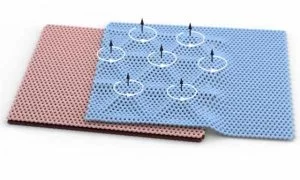A group of scientists at Columbia University and the University of Washington has found unique electronic states along with an uncommon kind of magnetism, can develop in a three-layer graphene structure.
The work was inspired by current research studies of twisted monolayers or twisted bilayers of graphene, making up either 2 or 4 overall sheets. These results were discovered to treat a range of uncommon electronic states driven by strong interactions between electrons.
We wondered what would happen if we combined graphene monolayers and bilayers into a twisted three-layer system,
stated Cory Dean, a teacher of physics at Columbia University and among the paper’s senior authors.
We found that varying the number of graphene layers endows these composite materials with some exciting new properties that had not been seen before.
In addition to Dean, Assistant Professor Matthew Yankowitz and Professor Xiaodong Xu, both in the departments of physics and product science and engineering at the University of Washington, are senior authors on the work. Columbia college student Shaowen Chen, and University of Washington college student Minhao He is the paper’s co-lead authors.
To conduct the experiment, the scientists stacked a monolayer sheet of graphene onto a bilayer sheet and twisted them by about 1 degree. At temperature levels a couple of degrees over, the group observed a range of insulating states and which do not carry out electrical energy, but they are driven by strong interactions between electrons. They also discovered that these states can be managed by using an electrical field throughout the graphene sheets.
Read more: NEW STUDY SHOWS RARE FORM OF MAGNETIC AND ELECTRICAL PROPERTY IN STACK-TWISTED GRAPHENE


